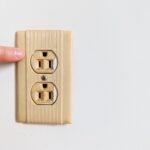When winter’s icy grip takes hold, the last thing you want is your water meter pit to freeze up, disrupting your water supply when you need it most. Discover the essential methods and strategies to shield your water meter pit from freezing temperatures, ensuring a reliable water flow in every season.
- Installation Basics: Learn the core principles of setting up a water meter pit with vital freeze protection.
- Material Selection: Uncover the best materials for preventing freeze damage, focusing on their thermal insulation and affordability.
- Innovative Techniques: Explore cutting-edge freeze protection solutions and best practices used in the industry.
- Automation Insights: Understand how smart technologies can transform freeze protection, streamlining monitoring and maintenance.
Embrace the knowledge and solutions presented in this article to safeguard your water supply against the challenges of freezing conditions, and maintain seamless operation year-round.
Understanding the Basics of Water Meter Pit Installation and Freeze Protection Methods
Water meter pit installation plays a vital role in ensuring the efficient distribution of water to homes and businesses. A water meter pit is a secured, underground enclosure that houses the water meter and related components. Proper installation is crucial to protect the water meter from environmental factors such as freezing temperatures.
In regions prone to harsh winters, integrating freeze protection methods into the installation process is essential. Freeze protection not only safeguards the functionality of water meter systems during cold spells but also helps prevent potential costly repairs due to burst pipes or damaged meters.
The subtle art of incorporating these preventive measures requires a thorough understanding of both installation techniques and the local climate challenges. By prioritizing freeze protection, water management becomes more reliable and efficient, ensuring a steady flow of water even during the coldest months.
Choosing the Right Materials for Effective Freeze Protection
Selecting the appropriate materials is fundamental for successful freeze protection in water meter pits. High-quality insulation materials can greatly enhance the thermal resistance of the installation, mitigating the risk of freezing.
Among the popular choices are closed-cell foam insulations, which offer superior thermal performance due to their dense structure. This type of insulation not only provides excellent protection against cold temperatures but is also cost-effective, making it a popular option for many installations.
Additionally, using pre-formed insulating sleeves around pipes and fittings can further fortify the system. These sleeves act as a barrier, maintaining the necessary temperatures to keep water meters operational during adverse weather conditions.
Investing in the right materials not only extends the life of the water meter system but also ensures a consistent water supply, ultimately proving to be a valuable cost-saving measure in the long term.
Advanced Techniques in Water Meter Pit Installation: Evaluating Freeze Protection Methods
The challenge of freeze protection in water meter pit installation has spurred the development of advanced methods, ensuring that systems remain functional even during harsh winters.
Utilizing innovative approaches is key to achieving reliable water flow.
One of the emerging techniques involves the incorporation of geothermal heating, where ground warmth is harnessed to prevent the freezing of water meter pits.
Another promising technique is the use of heat trace cables.
These are electrically powered cables that run alongside pipes, providing a steady heat output to maintain above-freezing temperatures within the pit.
This technology can be particularly effective in regions prone to extreme cold.
Coupled with thermostats that regulate energy usage, heat trace cables offer both efficiency and cost-effectiveness.
The integration of smart insulation materials represents another leap forward.
Recent advancements in insulation technology have yielded materials with superior thermal retention properties.
These materials are designed to minimize heat loss, creating a robust barrier against cold and reducing the need for supplementary heating measures.
In addition to these methods, industry best practices emphasize ensuring proper drainage within the pit.
Water accumulation can exacerbate freezing conditions; hence, effective drainage systems are critical.
Employing slope corrections and installing drainage blankets are strategies that can help avert freezing within water meter pits.
Water Meter Pit Installation: Practical Tips for Optimal Freeze Protection
A successful water meter pit installation hinges not only on initial setup but also on the careful application of freeze protection techniques.
Here are some practical tips to help maintain optimal freeze protection:
First, consider the location of your water meter pit.
Placing the pit in a sheltered, sunny area, when possible, can naturally minimize exposure to extreme cold.
However, if this is not feasible, ensuring that the cover is properly insulated can significantly reduce heat loss.
For those engaging in DIY water meter pit installations, pre-formed insulating shells are available and can be easily installed.
These shells are designed to encase the pit, providing an additional layer of protection against cold weather conditions.
Regular maintenance also plays a crucial role in freeze protection.
Inspect the pit periodically for any signs of wear or damage to the insulation.
Over time, materials can degrade, losing their thermal efficacy, so replacing or repairing worn components is important.
For professionals, employing infrared thermography during inspections can be a useful tool to identify cold spots quickly.
This non-invasive technique allows for the detection of potential freezing risks without disrupting the meter’s operation.
Finally, establishing a routine of monitoring the water flow can preempt potential freeze-related issues.
Installing water flow sensors can provide real-time data on the status of the water meter pit, allowing for prompt intervention when abnormalities are detected.
Integrating Automation in Freeze Protection for Water Meter Pits
Today’s advancements in technology have brought significant improvements in how we manage and protect water meter pits, especially in terms of freeze protection. Automated systems are revolutionizing the way we ensure these systems remain operational even in the harshest winter conditions.
Smart technology in freeze protection involves installing sensors and automated controls that constantly monitor temperature and environmental conditions around the water meter pit. These systems can detect any significant drops in temperature and automatically trigger heating elements, ensuring that the water flowing through doesn’t freeze.
The integration of automated freeze protection not only minimizes the need for manual inspections but also provides real-time data analysis, enabling timely responses to potential freezing incidents. By adopting such smart systems, maintenance costs are reduced as the need for emergency repairs decreases.
Another advantage of automation is its ability to send alerts and notifications to maintenance teams, allowing for proactive management of the water systems. These alerts can be configured to send warnings via emails or text messages when certain thresholds are met, ensuring that teams are informed and can respond promptly to any arising issues.
Incorporating automated technology into water meter pit installations also enhances overall system efficiency. With the ability to integrate with other smart grid technologies, these systems provide a comprehensive approach to utility management. Embracing automation in freeze protection means investing in reliability, efficiency, and future-proofing water infrastructure against extreme weather conditions.
Frequently Asked Questions About Water Meter Pit Freeze Protection
How can I prevent my water meter pit from freezing?
Use thermal insulation materials and install proper sealing to keep out cold air.
What materials are ideal for insulating a water meter pit?
- Closed-cell foam
- Polystyrene sheets
- Rubber insulation
Are there advanced technologies available for freeze protection?
Yes, using heat trace cables and automated temperature monitoring systems can enhance protection.
Can I install freeze protection solutions myself?
Yes, with the right materials and guidelines, DIY installation is possible and effective.
What role do automated systems play in freeze protection?
They streamline monitoring and maintenance, allowing for prompt action when temperatures drop.
Is it expensive to incorporate freeze protection in water meter pits?
While costs vary, investing in quality materials and technology saves money in long-term repairs.





